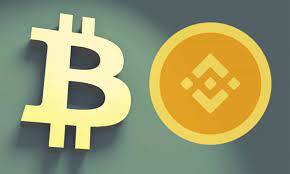Exchanging Binance Coin (BNB) to Bitcoin (BTC) is an increasingly popular activity for cryptocurrency investors and traders. With the right information and guidance, exchanging BNB to BTC can be a straightforward process. This article will discuss how to exchange BNB to BTC, including the steps involved in completing a successful transaction, key considerations for those looking to exchange, and potential alternatives for those who are not interested in direct exchanges.
The first step in exchanging BNB to BTC is finding an appropriate exchange platform. Popular exchanges typically offer a range of digital currencies and payment methods, as well as secure storage options for users’ coins. Some platforms also offer wallet services that can store both BNB and BTC. It is important that users research these features before selecting an exchange platform as there can be significant variations between providers in terms of fees, security protocols and customer support services.
Once the most suitable platform has been identified, users need to register with the service provider by providing their personal details such as name, contact information, date of birth etc. Upon successful registration they will be provided with a user ID and password which they need to use when logging into their account on the exchange platform. Once logged in they should then deposit the desired amount of BNB into their account using one of the available payment methods (e.g., bank transfer or credit card).
After this has been completed successfully, users can begin trading their BNB for BTC on the exchange platform similar to ChangeHero. They simply need to select the “Buy” option from the main menu on their dashboard and enter details about how much BTC they wish to purchase with their deposited BNB balance. Depending on market conditions, this order may take some time before it is fulfilled but once it has gone through users will have successfully exchanged their BNB for BTC which can then be transferred out of the exchange platform into a private wallet for safekeeping purposes if desired.
It is also important that users factor in any additional fees associated with exchanging one cryptocurrency for another when considering making trades like these; many platforms charge small transaction fees which can add up over multiple transactions so it pays to keep them in mind when making decisions about when and how much cryptocurrency you wish to buy or sell. Additionally, some platforms may require verification before enabling certain services such as withdrawals ; therefore, it is essential that relevant documentation is prepared upfront so that any delays caused by incomplete paperwork are avoided.
For those wanting more flexibility than direct crypto-to-crypto exchanges provide, there are other alternatives available – such as peer-to-peer (P2P) networks where traders interact directly rather than through intermediaries like exchanges. Here buyers and sellers post offers detailing what currency they wish to buy or sell ; should both parties agree on terms, then a trade takes place directly between them. This allows people more control over their investments as well as potentially lower fees than traditional exchanges due to there being no middleman involved. However, choosing this route does mean taking additional precautions such as carrying out background checks on potential trading partners before entering into any agreements.
In summary, exchanging Binance Coin (BNB) for Bitcoin (BTC) is a relatively straightforward process provided you have chosen an appropriate exchange platform with compatible payment methods. Researching different providers prior to registering an account should yield insights into factors like fees, security protocols, customer support services etc. Once signed up, just follow instructions on your account page regarding deposits / withdrawals / trades etc until you have successfully exchanged your coins. Finally, always make sure you factor in any additional fees associated with exchanging one cryptocurrency for another when making decisions about buying/selling cryptocurrencies such as BNB and BTC.

